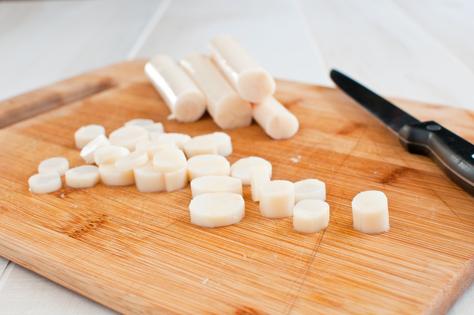Environmental Nutrition: Love those hearts of palm!
True to their name, hearts of palm are the creamy white vegetable harvested from the inner core, or heart, of certain palm trees.
The folklore
Native to South and Central America, hearts of palm (as well as the nuts, bark, and leaves of the palm tree) have been used by indigenous people for thousands of years, dating back to Mayan times. Hearts of palm are a traditional part of the cultural cuisines of Costa Rica, Ecuador, Brazil, and Southeast Asia, and they have become increasingly popular in the U.S., particularly for their versatility as a meat substitute and low carb alternative. Any way they are enjoyed, hearts of palm are a nutritious addition to the pantry.
The facts
Also known as palm cabbage, swamp cabbage, and chonta, hearts of palm may come from any of a variety of palm trees, including the coconut palm, peach palm, acai palm, and palmetto palm. The bark and tough outer layers are removed from the palm tree stem to remove the tender, cylindrical core, which is the heart. A half-cup serving contains 10% DV (DV=Daily Value, based on 2,000 calories/day) of the min- erals copper and zinc, which support the immune system and 14% DV of the mineral phosphorus, important for bone and tooth health.
The findings
Rich in polyphenols (plant compounds associated with health ben- efits), including anthocyanins, flavanols, and chlorogenic acid, known for their antioxidant and anti-inflammatory properties, research has linked chlo- rogenic acid with heart-protective properties, such as the potential to lower blood pressure and help prevent atherosclerosis. Hearts of palm contain both soluble and insoluble fiber, which support digestive health and gut health. A study in the Journal of the Science of Food and Agriculture concluded that hearts of palm may be a potential prebiotic ingredient to promote gastro- intestinal health. Hearts of palm protein has been studied for its nutritional value as a meat substitute. A study in the Journal of Food Science and Technology found the protein in hearts of palm to be an ideal substitution for animal protein in the food industry.
The finer points
Fresh hearts of palm can be difficult to find, as they are highly perishable. Canned and jarred are available at most grocery stores. Choose low sodium varieties if available, and rinse with water to lower sodium fur- ther. Enjoy them raw or cooked. Slice them into green salads, or try them as a low-carb pasta alternative. Hearts of palm shred easily which makes for a good meat substitute. They can also be shredded, diced, or sliced as a fish substitute in dishes like crab cakes or ceviche. They’ll add crunch, mild flavor, and a nutrient boost to most any dish.
(Environmental Nutrition is the award-winning independent newsletter written by nutrition experts dedicated to providing readers up-to-date, accurate information about health and nutrition in clear, concise English. For more information, visit www.environmentalnutrition.com.)
©2025 Belvoir Media Group, LLC. Distributed by Tribune Content Agency, LLC.











Comments